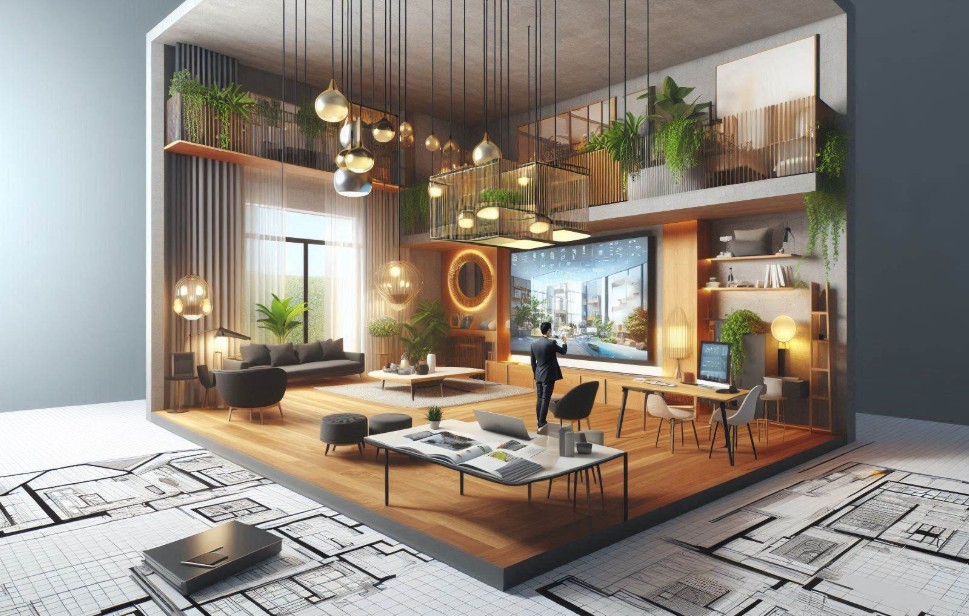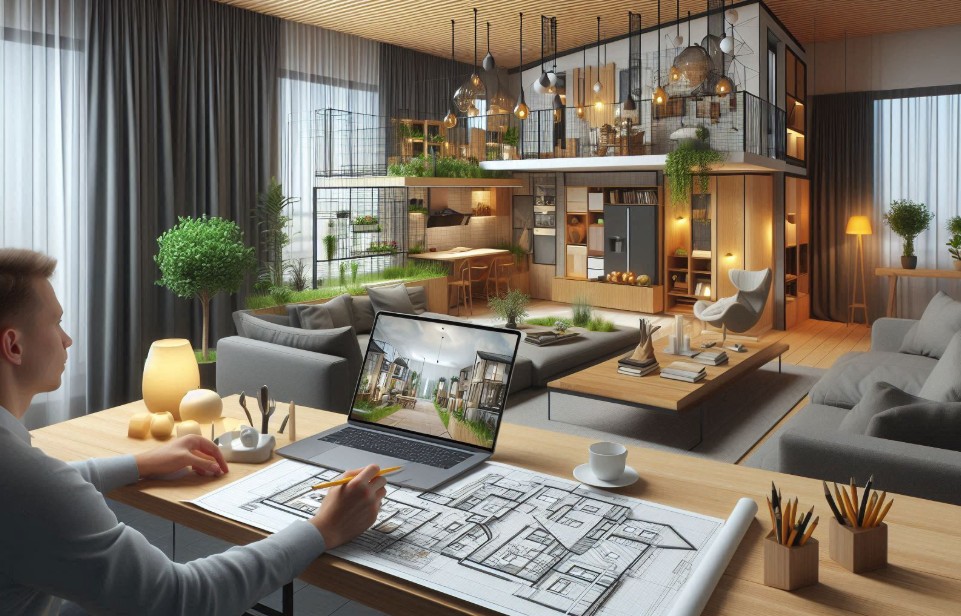In recent years, there has been a significant advancement in the field of Artificial Intelligence (AI) and Augmented Reality (AR). These technologies have become increasingly popular and have the potential to enhance virtual experiences in various fields such as gaming, education, healthcare, and...
Virtual Designer Creates Unique Apartment Interiors

In today's world, the way we envision and design our living environments has evolved dramatically. Thanks to advanced technological tools, individuals can now reimagine their homes with just a few clicks. Gone are the days of traditional methods that required in-person consultations and costly renovations. Now, anyone can access user-friendly platforms to bring their design ideas to life.
Through cutting-edge software, homeowners can experiment with layouts, colors, and furniture arrangements, all while receiving tailored recommendations. This modern approach allows for an interactive experience, ensuring that each space reflects personal taste and style. Whether you're looking to revamp a single room or redesign an entire living area, technology makes it possible to explore various possibilities before making any final decisions.
With the power of digital tools, anyone can take charge of their home's aesthetics, making it easier than ever to achieve the perfect look. By leveraging these advancements, you can enjoy a seamless and enjoyable design process that is both time-efficient and cost-effective.
How Digital Tools Transform Spaces
The process of transforming a living space has evolved with the advancement of technology. Today, new digital platforms provide a fresh approach, allowing individuals to experiment with design ideas without needing professional expertise or a physical presence. This shift enables a more flexible, accessible, and dynamic way to plan and visualize changes in any space.
These advanced solutions offer a level of precision and customization that was previously difficult to achieve. By simulating various layouts, color schemes, and furnishings, users can see exactly how different elements interact with each other. This digital process ensures that every decision is informed, reducing the risk of costly mistakes and improving the overall design outcome.
Customization is at the core of this transformation, giving users complete control over their environments. With the ability to easily try out different styles and arrangements, it's easier than ever to experiment and discover the ideal design that suits personal preferences. Time-saving features make it possible to instantly adjust plans, helping individuals make better choices without lengthy wait times or delays.
Benefits of Using Digital Design Solutions
Modern tools for planning living spaces offer an array of advantages, making the process of reimagining homes more efficient and accessible. These platforms empower users to explore creative possibilities, save time, and achieve better outcomes without the need for extensive professional assistance or in-person consultations.
Enhanced Flexibility and Control
One of the key benefits is the ability to experiment with different styles, layouts, and arrangements in real-time. These tools allow users to make adjustments instantly, providing full control over the design process. Whether it's testing new furniture placement or trying out different color schemes, the flexibility ensures the final result matches personal preferences.
Cost-Effective and Time-Saving
Digital solutions often reduce the expenses associated with traditional methods. By eliminating the need for physical prototypes and streamlining the decision-making process, these tools save both time and money. Additionally, they minimize the chances of costly errors by providing precise visualizations before committing to changes.

Advantage Description
| Convenience | Access design options from anywhere, on your schedule. |
| Personalization | Tailor every detail to match individual tastes and needs. |
| Efficiency | Quickly adjust and refine plans without delays or additional costs. |
Step-by-Step Guide to Digital Interior Design
Planning and refining the look of a living space can be an exciting and straightforward process with the help of modern technology. These tools simplify complex tasks, offering users a structured way to achieve their ideal results by visualizing and customizing designs efficiently.
Start with Accurate Measurements
The first step in any design project is to measure the dimensions of the space accurately. Knowing the size of the area ensures that all future design choices, such as furniture placement and layout, will fit perfectly. Precision at this stage saves time and prevents potential errors later.
Explore Styles and Layouts
Next, experiment with different arrangements, themes, and color palettes. Many platforms offer pre-designed templates or libraries of options that can serve as inspiration. This step allows users to explore various possibilities and determine what best matches their preferences and practical needs.
By following a clear and organized approach, anyone can create a space that reflects their personality and functions efficiently, all while enjoying the creative process.
Creating Personalized Home Designs Online
Designing a living space that reflects individual tastes and preferences is now easier than ever with the help of online platforms. These tools empower users to craft unique environments tailored to their specific needs, all from the comfort of their own homes.
The process begins by selecting the type of room or area you want to transform. Users can then customize every aspect, from furniture arrangement to wall colors and decorative accents. This flexibility allows for endless combinations, making it simple to find the perfect fit for both style and functionality.
Additionally, many platforms offer detailed previews that provide a realistic view of how the final design will look. This feature helps users make informed decisions and adjust elements until they achieve the desired outcome. The result is a personalized space that feels truly one-of-a-kind.
Choosing the Right Online Design Tool
Finding the ideal platform for planning and visualizing home spaces is essential for a smooth and successful experience. With so many options available, selecting the right tool requires consideration of your specific needs and preferences.
Here are some key factors to evaluate when making your choice:
- Ease of Use: Look for a platform with an intuitive interface that allows for effortless navigation and quick learning, even for beginners.
- Features: Consider tools that offer advanced options such as 3D visualization, customizable templates, and a wide range of furniture and decor libraries.
- Compatibility: Ensure the platform works seamlessly on your devices, whether it's a computer, tablet, or smartphone, for convenient access.
- Cost: Compare free and paid options to find one that fits your budget while still offering the functionality you need.
Once you've narrowed down your options, take advantage of trial versions or demos to test the platform and see how it aligns with your design goals. Choosing a tool that meets your expectations will enhance creativity and efficiency throughout the process.



